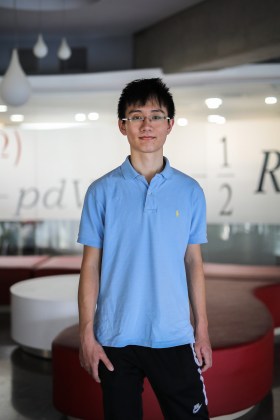 Corinna Kern—laif/Redux
Corinna Kern—laif/Redux If you’re 23 years old and in the early stages of your career as a physicist, it’s best not to say that the work you’re doing amounts to “magic.” So Yuan Cao doesn’t—but that doesn’t stop others from excitedly touting his breakthrough with “magic angle graphene.” Working in the lab of MIT physicist Pablo Jarillo-Herrero, Cao has been investigating what happens when two layers of graphene—a crystalline form of carbon, each just one atom thick—are laid atop each other. The answer: nothing. But when he twists the sheets 1.7 degrees and supercools them, they become an insulator. If he changes the twist to 1.1 degrees, the graphene becomes superconducting—able to conduct electricity with no resistance. That is the magic angle—and a near magical effect, since superconducting materials have all manner of scientific applications. —Jeffrey Kluger
